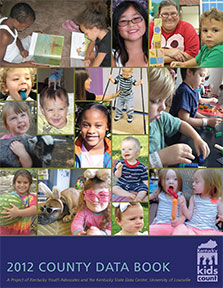A
new overview of Kentucky
children’s advantages and disadvantages, from birth through high school, shows
a heavy dependence on social safety nets, such as public preschools and
subsidized meals.
Figures
for Christian County reflect trends similar to the
state’s.
They
also show potentially discouraging gaps in parenting and education: low rates
of college readiness, high rates of smoking during pregnancies.
The
Kids Count County Data Book study, released by Kentucky Youth Advocates,
consists of more than 100 datasets. It gives some broad recommendations but
doesn’t delve far into causes. But walking through the numbers, in
chronological sequence, gives a unique and useful perspective.
Among
Christian County’s newborns, about 17.6 percent
had mothers with no high school diplomas. That number applies to births between
2007 and 2009. Trigg and Todd scored worse in this area.
Also,
more than a fifth of this county’s mothers smoked during their pregnancies,
according to 2009 data. Only about 39 percent breastfed their babies, which is
far healthier than using formula.
Parents
of 1,832 Christian
County children received
financial aid for child care in the last fiscal year. The state pays an average
of $5,766 for a 4-year-old and $6,594 for an infant. These subsidies are
smaller than the federal government recommends, and Kentucky Youth Advocates
warn that this might cause a lower level of quality.
In
Trigg County, only 90 children received these
subsidies, and there were 193 in Todd.
When
they reached the ages of 3 and 4, about 23.3 percent were in publicly funded
preschools. Some of these kids were disabled and some were poor. Trigg had 39.5
percent; Todd had 47.5.
For
those old enough to attend school, 15 percent were “chronically absent” from
classes, meaning they missed a tenth or more of the school year. Todd had the
same percentage; Trigg had 33.1.
According
to the report, children usually miss school for one of three reasons: illness,
socioeconomic factors, or court involvement; fear of harassment or
embarrassment; or having families that don’t value education.
For
kids in Christian
County’s public schools,
about 73 percent were eligible for free or subsidized meals. Trigg had 55
percent; Todd had 61.
Kids
who get enough to eat are more likely to succeed, the report states.
Only
0.5 percent of local students were suspended for breaking the law, whereas it
shot to 2 percent or higher in a few counties. But 8.4 percent were suspended
for breaking school rules.
As
for test scores, nearly 60 percent of this county’s high schoolers scored less
than proficient on reading tests, and more than 65 percent missed the mark on
math tests.
More
than a fifth of students here fail to graduate within four years, though the
rate improved between 2008 and 2011. Trigg and Todd have slightly better
graduation rates.
But
even among the graduates, a majority — 54.1 percent — are unprepared for
college or careers. This estimate came from the Kentucky Department of
Education and the Kentucky Council on Postsecondary Education.
In
Todd, only 36.4 percent met the readiness criteria. In Trigg, 54.1 percent.
That
puts them in a tough position entering adulthood. About 54 percent of Kentucky jobs will
require postsecondary education within five years, the report states.


No comments:
Post a Comment